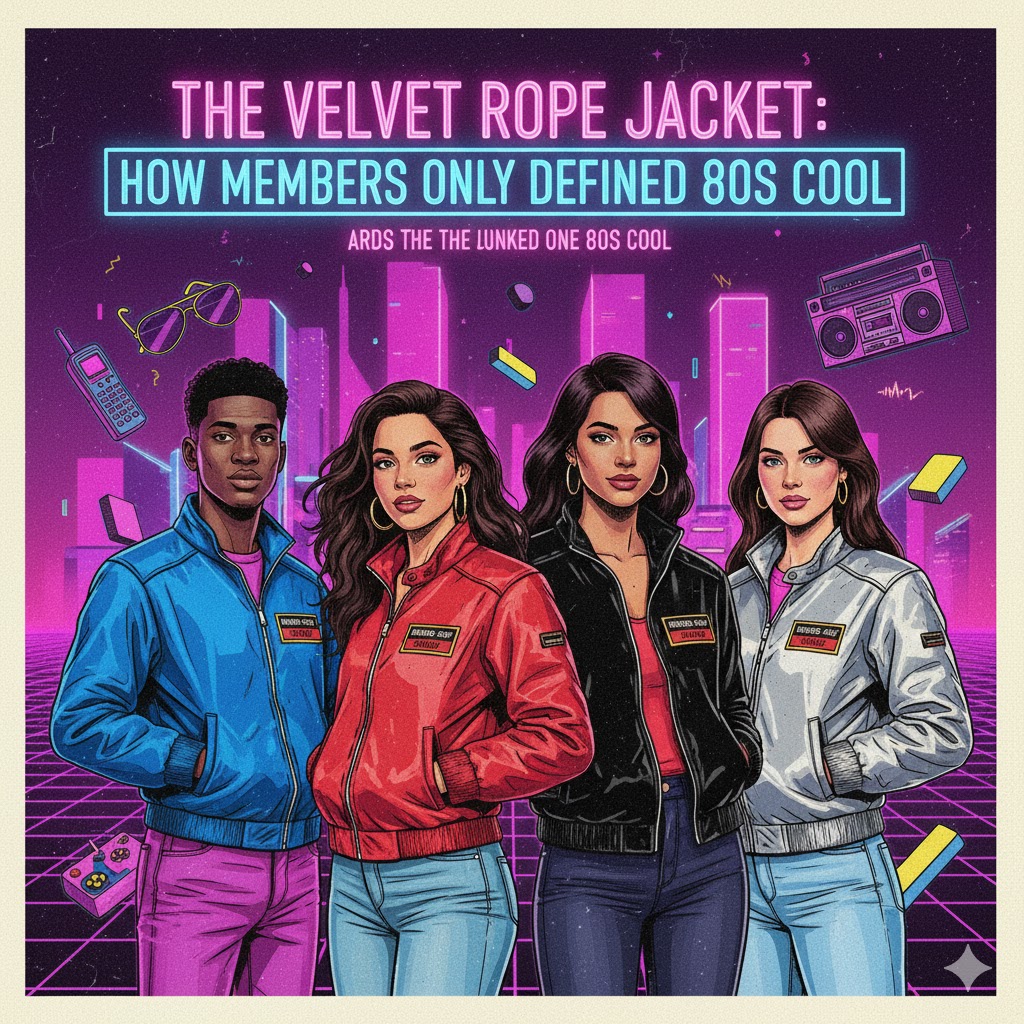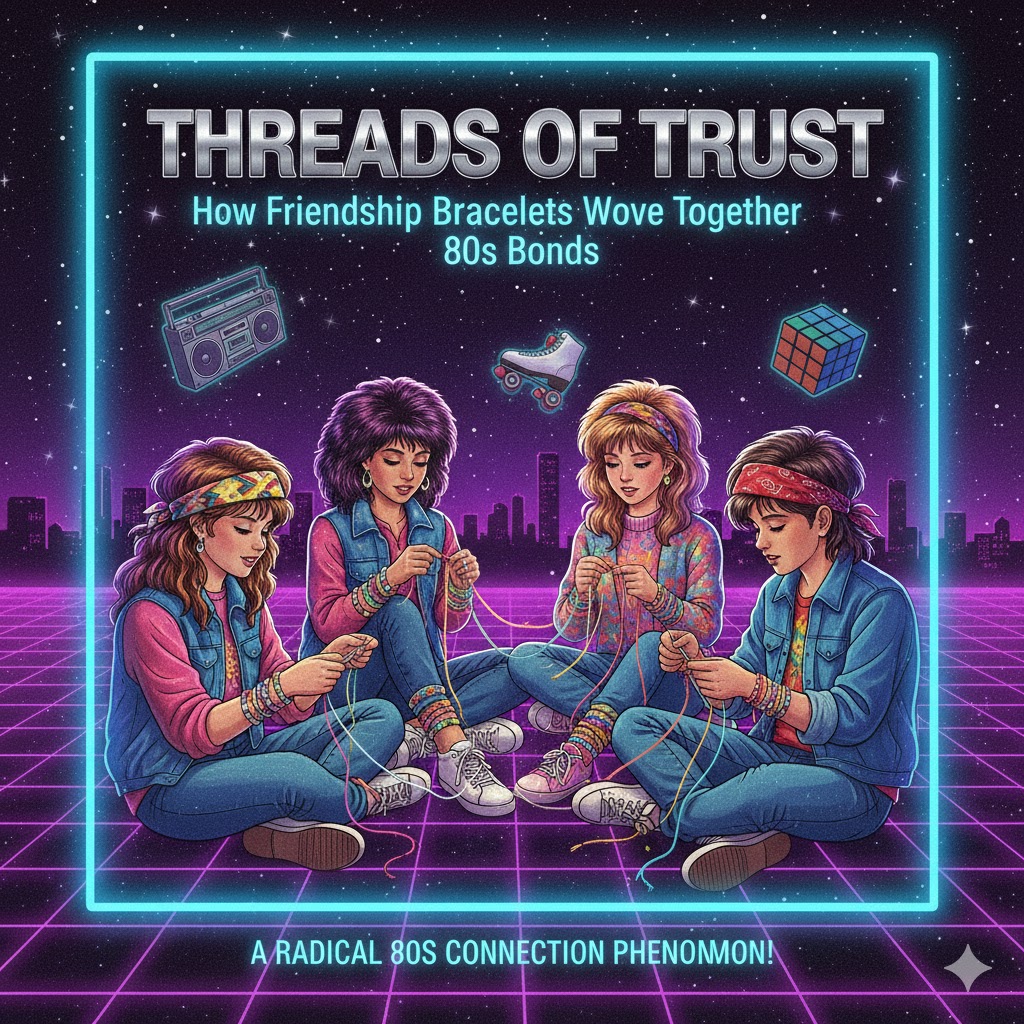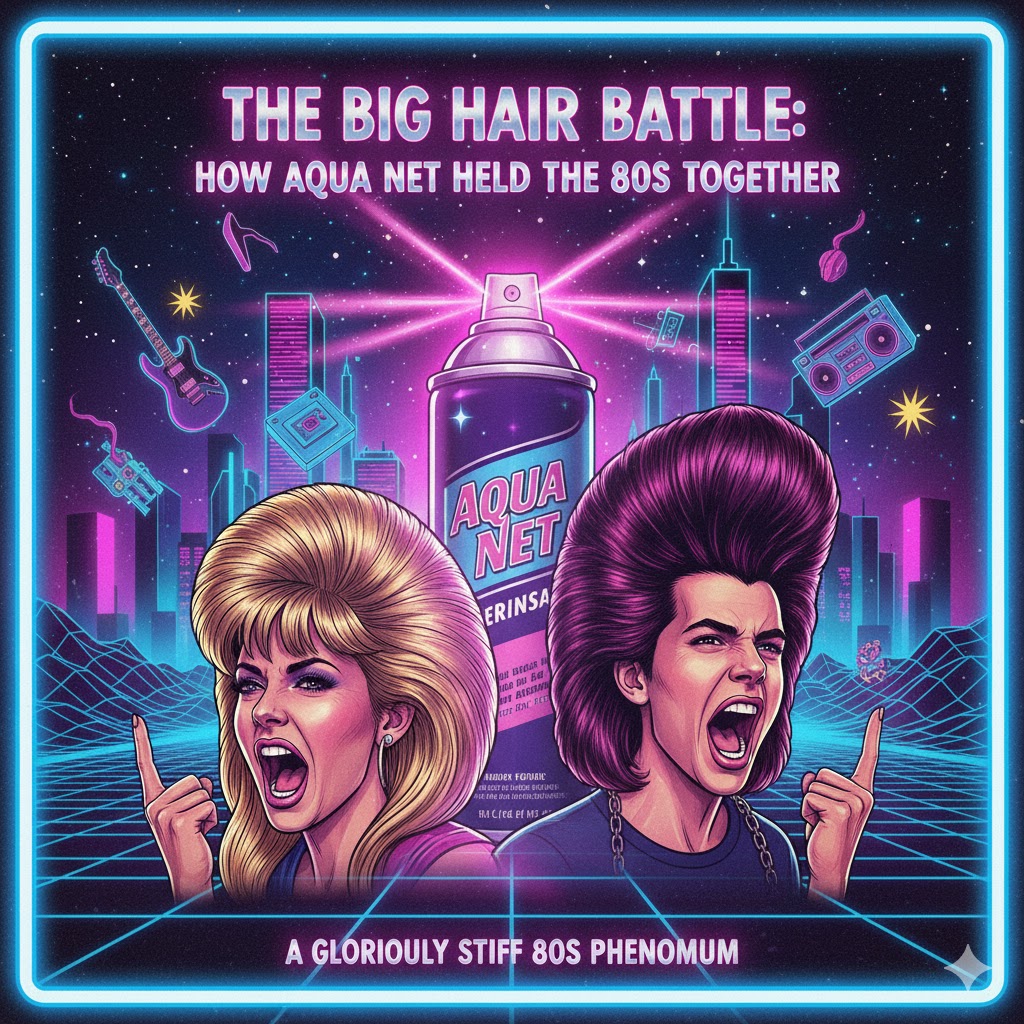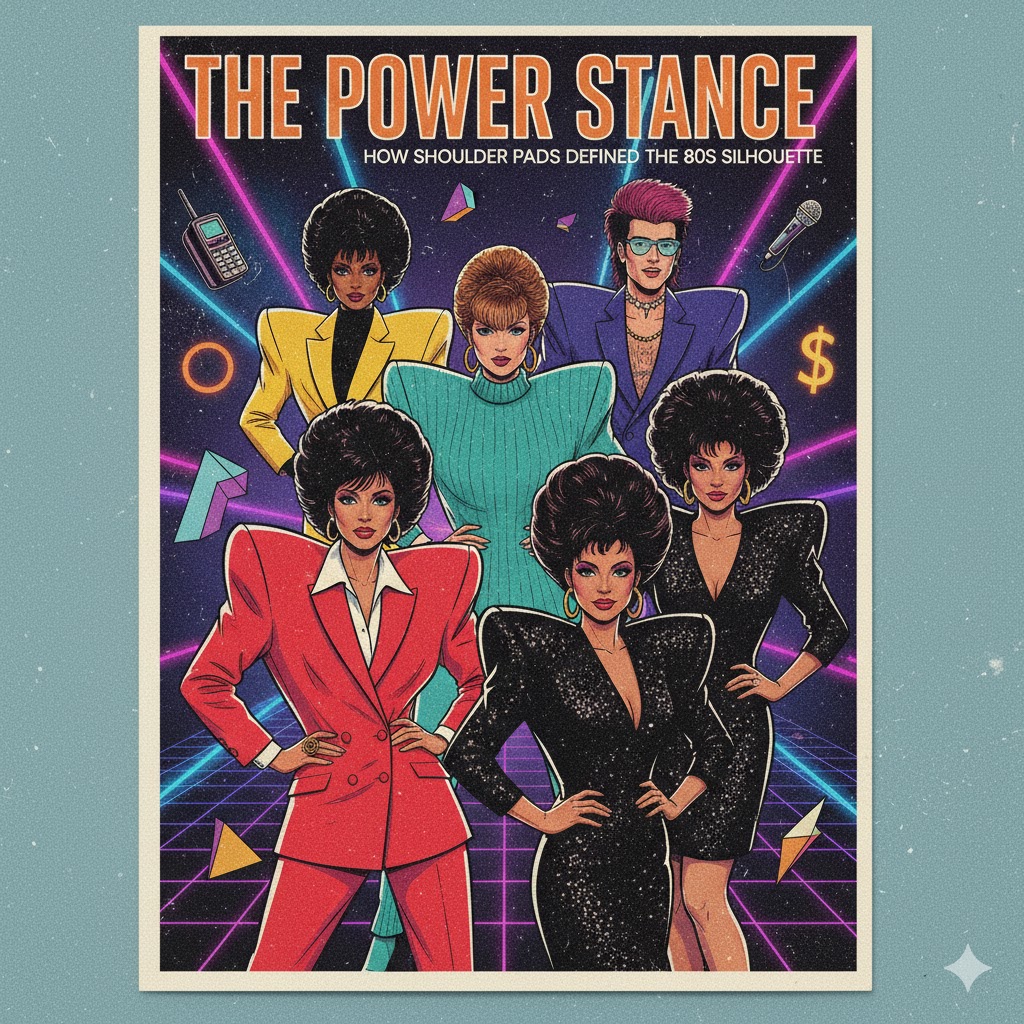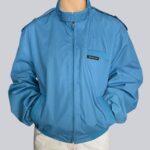 The 1980s were a time of bold fashion, audacious hairstyles, and a pop culture landscape that demanded instant recognition. Among the many style statements of the decade, few items captured the imagination—and the wallets—of American youth like the Members Only jacket. With its signature epaulets, elasticized waist, and narrow shoulders, this jacket became a symbol of both aspiration and attitude, cementing its place in the wardrobe of the decade’s trendsetters. More than just a piece of clothing, the Members Only jacket encapsulated a cultural moment, reflecting the ambitions, anxieties, and aesthetics of the 1980s.
The 1980s were a time of bold fashion, audacious hairstyles, and a pop culture landscape that demanded instant recognition. Among the many style statements of the decade, few items captured the imagination—and the wallets—of American youth like the Members Only jacket. With its signature epaulets, elasticized waist, and narrow shoulders, this jacket became a symbol of both aspiration and attitude, cementing its place in the wardrobe of the decade’s trendsetters. More than just a piece of clothing, the Members Only jacket encapsulated a cultural moment, reflecting the ambitions, anxieties, and aesthetics of the 1980s.
Members Only first appeared on the fashion scene in 1975, introduced by designer Georges Marciano and his brothers, who sought to create a jacket that merged the casual appeal of sporty outerwear with the sophistication of tailored fashion. Its original design was meant to be versatile, lightweight, and practical, but it was the marketing strategy behind it that transformed the jacket into an icon. The brand positioned itself as exclusive yet accessible, promising a sense of belonging for those who wore it. The slogan “When you put it on, something happens” resonated deeply, suggesting that donning the jacket was not just a fashion choice but a lifestyle declaration.
By the early 1980s, Members Only had exploded into mainstream consciousness. The jacket’s popularity was amplified by the era’s fascination with aspirational imagery. Television shows, movies, and music videos often featured characters wearing the jackets, and their association with success and coolness was instant. For teenagers and young adults, Members Only jackets became a must-have item, a symbol that you were part of the cultural conversation. The jackets were not limited to a single style; they came in a range of colors, though classic shades like navy, beige, and black remained perennial favorites. This variety allowed wearers to express individuality while still signaling alignment with a collective cultural identity.
One of the most significant drivers of the jacket’s impact was its presence in popular media. In film, Members Only jackets became shorthand for a certain type of character: confident, stylish, and socially aware. In 1983’s Risky Business, for example, Tom Cruise’s portrayal of Joel wears a range of fashionable items that defined teen coolness, and while not exclusively Members Only, the aesthetic mirrored what the jackets represented—aspirational youth culture. Television also played a pivotal role. Sitcoms and dramas of the era often showcased characters in Members Only jackets, signaling to viewers that these were individuals with style, charm, and social presence. Music videos, a relatively new phenomenon thanks to MTV, amplified this effect. Artists like Michael Jackson and Prince, who were masters of visual impact, helped reinforce the idea that clothing could be an essential part of identity. Members Only jackets fit seamlessly into this narrative, bridging the gap between music, media, and fashion.
Beyond media exposure, the jacket’s design contributed to its cultural resonance. The epaulets, zipper pockets, and tailored fit created a silhouette that was simultaneously athletic and refined, projecting confidence without seeming overdone. Unlike heavy winter coats or purely functional outerwear, Members Only jackets were lightweight and comfortable, making them suitable for both casual and semi-formal occasions. This versatility was crucial: young people could wear their jacket to school, a movie, or a party and feel stylish in any setting. The psychological appeal of looking good without exerting effort contributed to the jacket’s widespread adoption.
The socio-cultural context of the 1980s also helped the Members Only jacket thrive. The decade was marked by an emphasis on individualism, upward mobility, and self-presentation. The rise of consumer culture, fueled by economic growth and the expansion of shopping malls, encouraged young people to showcase their tastes and social status through clothing. In this environment, owning a Members Only jacket became a subtle but potent indicator of social awareness and economic participation. It was not simply about warmth or protection—it was about signaling that one belonged to a generation that valued style, mobility, and self-expression.
Members Only jackets also became entwined with various subcultures and social movements. In urban areas, they were often seen on teenagers navigating the complex terrain of peer groups, from sports teams to school cliques. The jackets’ relatively moderate price point made them accessible to a wide audience, while their stylish appearance allowed wearers to stand out. In suburban contexts, the jackets were symbols of neatness, aspiration, and a polished sense of self. They were versatile enough to cross social boundaries, appealing to both the athletic jock and the trendy student, making them one of the few fashion items that bridged demographic divides in the 1980s.
Interestingly, the jacket’s rise in popularity also coincided with a subtle commentary on consumerism and exclusivity. Despite its name, Members Only was widely available, making the promise of membership more symbolic than literal. This playful contradiction—positioning an item as exclusive while simultaneously mass-marketing it—resonated with the decade’s fascination with brand identity and lifestyle marketing. Wearing a Members Only jacket was a way to assert individuality while simultaneously aligning oneself with a recognizable cultural signifier. It was about belonging without losing identity, a theme that permeated 1980s youth culture.
The fashion legacy of Members Only jackets extends beyond their peak years. While the jackets faded somewhat in the 1990s, replaced by baggier styles and grunge aesthetics, they remained a nostalgic touchstone. In contemporary fashion, Members Only has experienced periodic revivals, often tied to retro trends or pop culture homages. The jackets evoke memories of a time when style was both aspirational and accessible, and they continue to serve as cultural markers in films, television, and music that reference the 1980s. They represent a particular moment when fashion, media, and youth identity converged to create an enduring symbol.
Collectors and enthusiasts today view vintage Members Only jackets as artifacts of 1980s pop culture, treasured for both their aesthetic appeal and their historical significance. Authentic jackets from the decade can command significant prices in vintage stores and online marketplaces, a testament to their lasting allure. Beyond their monetary value, the jackets carry an intangible cultural weight. They recall a decade characterized by bold colors, economic optimism, and a belief in the transformative power of personal style. For those who grew up in the 1980s, slipping into a Members Only jacket is not merely a sartorial choice—it is a journey back to the defining moments of their youth.
The influence of Members Only also underscores the broader dynamics of 1980s fashion. The decade emphasized statement pieces, logos, and branding in ways that previous eras had not. Clothing became a key mode of self-expression, and brands like Members Only understood that marketing could elevate a simple jacket into a cultural icon. The jacket’s success demonstrated how design, media, and narrative could intersect to create a phenomenon that went far beyond utility. It was a lesson in the power of image, timing, and branding, one that resonates in today’s fashion landscape as much as it did in the 1980s.
Ultimately, the Members Only jacket’s impact on 1980s pop culture lies in its perfect alignment with the spirit of the decade. It represented ambition, style, and a subtle defiance of the mundane, all wrapped into a practical, wearable garment. From the mall-hopping teenagers to the television screens that shaped public perception, Members Only became a shorthand for cool, aspiration, and identity. Its presence in media, its accessibility to a wide audience, and its design elegance allowed it to transcend mere fashion, embedding itself into the collective memory of a generation.
Looking back, the Members Only jacket is more than nostalgia; it is a cultural artifact that exemplifies the intersection of fashion, media, and identity in the 1980s. It reminds us that clothing can be transformative, that a simple garment can carry with it the power to define trends, signify belonging, and communicate personality. The jacket’s enduring appeal demonstrates the profound ways in which style can shape, reflect, and amplify culture. For anyone who wore one—or dreamed of owning one—the Members Only jacket was never just outerwear. It was a statement, a badge, and a key to unlocking the spirit of a decade that celebrated both individuality and collective style.
In the pantheon of 1980s fashion, few items achieve the cultural resonance of the Members Only jacket. Its story is one of design ingenuity, marketing savvy, and perfect timing—a convergence that allowed a simple jacket to become emblematic of an era. Today, it stands as a reminder of the power of clothing to define a moment in time, influence identity, and leave an indelible mark on pop culture history.
